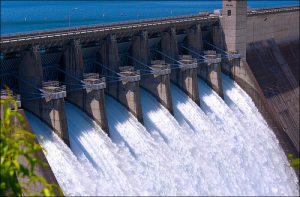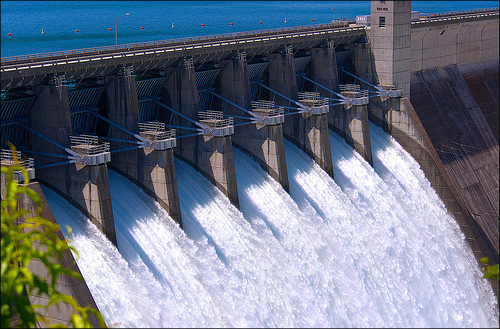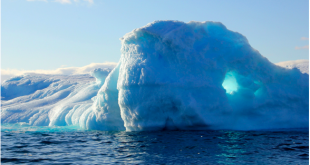Submitted by: Selena Guo

Due to recent heavy rains, the Army Corps of Engineers had to open the floodgates to keep the water from topping the dam.
As a renewable resource, hydropower is much gentler on the environment than the traditional burning of fossil fuels. To harness hydropower, dams are constructed on rivers. The flowing water spins a turbine in the dam to generate electricity. However, the building of dams has negative ecological impacts.
By disrupting water flow, the original river topography is changed. For organisms that have adapted to the the river’s dynamic, the sudden change can lead to extinction of species.
Dams have a mechanism built to prevent river silt and debris from getting caught in the machine. This prevents the normal distribution of silt in the river, harming whole food chains. The clarity of the water to species’ habitats are disrupted.
Migration patterns of fish are disrupted by dams. They cannot reach their breeding grounds, leading to less offspring.
So while dams are an important source of sustainable energy, we must also consider the ecological damage they cause. A dam that does less damage is the hybrid dam. Another option that has much more far-reaching benefits is finding less damaging sustainable energy sources and methods for harvesting energy.
 Tempus Magazine By Students, For Students
Tempus Magazine By Students, For Students 



